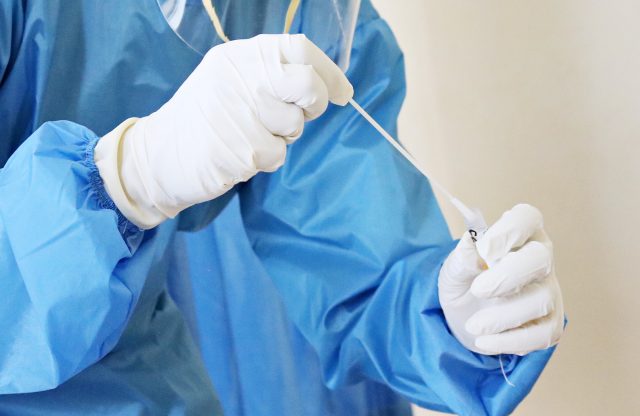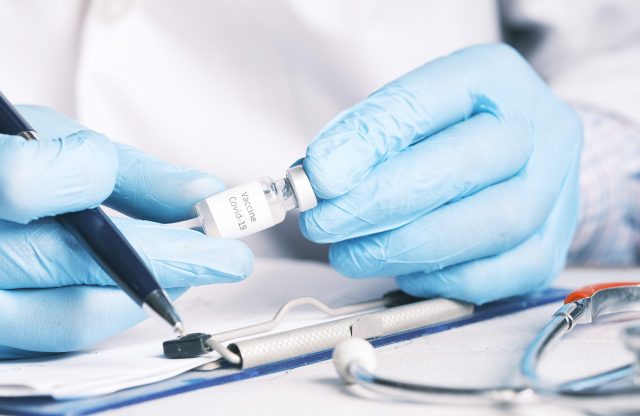Dr Robert Hess: Long Covid risk factors

Dr Robert Hess – 02/15/2022
Dr Robert Hess: Long Covid risk factors now identified.
According to the latest figures, between 10 and 30 percent of all persons who test positive for SARS-CoV-2 go on to develop long-term symptoms that can last for weeks, months or potentially even years. These can vary greatly depending on the severity of the disease, the age of the patient and his or her medical history. When – or indeed whether – those who suffer so‑called “Long Covid” can expect their symptoms to clear up is unclear, and there is as is as yet no treatment for the condition that does more than just alleviate symptoms. A U.S.-based research group has now identified four factors that significantly increase the risk of Long Covid.
In order to derive a more complete picture of Long Covid and to better define the term, an international team of researchers has analyzed data from a large-scale survey of covid-specific symptoms, involving 16 studies conducted in different countries around the world. The researchers found that there were no fewer than 55 long-term effects associated with COVID-19. Most of these effects are classic clinical symptoms such as fatigue, headaches, joint pain, anosmia (olfactory disturbance), ageusia (lost sense of taste), muscle weakness, depression and cognitive impairment (i.e. concentration and memory problems). However, long-term effects such as respiratory problems and hair loss, as well as diseases such as myocarditis, the onset of diabetes mellitus and thromboembolism, have also been observed.
In some cases, these long-term effects also overlap with vaccination side-effects. It is therefore is important to take into account the point in time when the symptoms first manifested themselves. Some patients infected with SARS CoV 2 are at greater risk of developing Long Covid than others. Triggers for the syndrome have previously included advanced age, severe obesity and underlying pulmonary/coronary conditions. Gender also appears to play a role: the research concludes that women are disproportionately affected by fatigue syndrome as a long-term consequence of infection.
Recent studies suggest that people who have been hospitalized for COVID-19 are significantly more likely to suffer from long-term sequelae. In this group, no fewer than 76 percent of patients were still suffering from Long Covid symptoms six months after discharge.
A team of researchers led by Yapeng Su at the Institute for Systems Biology in Seattle has now identified four additional risk factors for Long Covid. For the purposes of their research, the team followed almost 300 patients from their initial COVID-19 diagnosis through convalescence (two to three months after diagnosis) in an in-depth multimicroscopic longitudinal study. The subjects, whose age ranged from 18 to 89 years, had contracted COVID-19 in 2020 and early 2021. Consequently, the results cannot be extrapolated to the Omicron variant.
The patients were quizzed about more than 20 symptoms considered typical of Long Covid, such as persistent fatigue, shortness of breath or cognitive impairment (see above). Of those who reported three or more symptoms, 95 percent had one or more of the four risk factors identified in the study:
1) a high viral load in the blood at the onset of infection, as evidenced by high levels of viral RNA;
2) the presence of certain autoantibodies which are directed against the patient’s own immune system, have the capacity to aggravate an infection and also occur in rheumatoid arthritis or other autoimmune diseases (COVID-19 sufferers can form a large quantity of such antibodies, which are detectable up to six months after the acute illness and are evidently involved in the development of Long Covid syndrome);
3) reactivation of the Epstein-Barr virus (EBV) which is responsible for triggering glandular fever, a disease that many people become infected with at a young age (EBV can lie dormant in the body for very many years and become active again during systemic illness, in much the same way as the herpes virus);
4) the presence of diabetes mellitus (Type 2).
More than 60 percent of those examined in the study exhibited two or more of the typical symptoms. Autoantibodies were found in two-thirds of them, and no other factor played such a significant role. Diabetes, high viral load and EBV were each identified in one third of the sample. Typically, however, more than one factor was present at the same time, and the combined effect therefore proved decisive. These findings could now open up new approaches to the treatment of Long Covid.
Preliminary data from Israel indicates that vaccination against SARS-CoV-2 inhibits the development of Long Covid syndrome. In the specific case of Israel, the vaccine administered was exclusively of the mRNA variety. This was found to not only reduce the risk of severe disease but also to make long-term sequelae following vaccine breakthrough less likely. Data from individuals who contracted SARS-CoV-2 relatively early in the pandemic suggests that vaccination could also reduce the risk of Long Covid: persons who became infected after previously receiving the BioNTech/Pfizer vaccine were significantly less likely to report typical long-term symptoms (e.g. fatigue and persistent exhaustion) than those who were unvaccinated at the time of infection. In fact, vaccinated people were no more likely to complain of certain symptoms than people who had never contracted SARS-CoV-2. The results of the study are preliminary, however, and the peer review process has yet to be carried out.
As mentioned in our last Keynote, we will now be incorporating these risk factors into our prophylactic program and updating it with regard to Long Covid symptomatology in addition to vaccination side-effects. Thanks to our C-19 saliva testing and antibody monitoring last year, we have already managed to collect all specific data in this regard for our Premium clients, which puts us one step ahead. We will be shortening the intervals between tests for clients with a higher risk profile and introducing even more targeted diagnostic methods.

